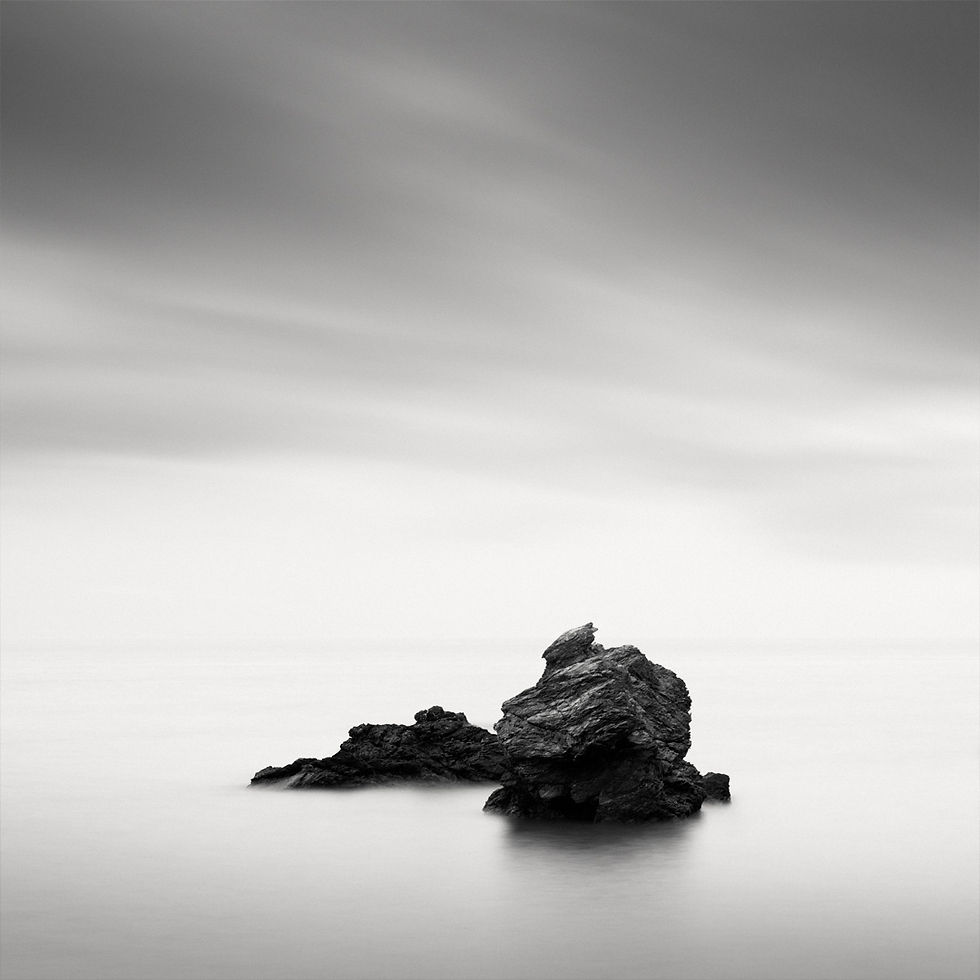Japan: The Meoto Iwa Rocks in Ise
- Olivier

- May 24, 2020
- 5 min read
Updated: Oct 29, 2025
The Japanese have a strong penchant for symbols. This is a well-established fact, and I have touched upon it several times in my articles. The Meoto Iwa rocks, located in Mie Prefecture in Ise, are undoubtedly among the most famous and photographed in the entire country. Tourists flock in large numbers throughout the year to visit this renowned series of rocks artfully arranged by Mother Nature along the coast, not far from the beautiful city of Ise.

Just like the Torii gates, this pair of rocks is symbolically associated with the Shinto religion. They represent the sacred union of two Shinto goddesses through marriage. The man and woman symbolized here are connected by a rope called Shimenawa. By association, this shrine signifies the sacred union between a man and a woman.
Newlyweds visit this shrine to pray and purchase various items to ensure a happy marriage. The shrine is also adorned with numerous frog statues (Kaeru), a Japanese symbol of happiness. Additionally, one of the rocks strangely resembles the shape of a frog. The Meoto Iwa rocks belong to the Futamiokitama Shrine.

Perfect Balance
Accompanied by several other small rocks scattered around, the ensemble creates a balanced and particularly aesthetic scene for aquatic landscape photography. The distant background also contributes to this harmony by providing an appropriate scale to this group of rocks. This was quickly recognized by photographers who make it a point to come and capture them during their stay in Japan. And I understand why, as the whole scene is truly photogenic.
Despite their small size, this natural formation is a gem. There are many others like it all around Japan, sometimes much larger in size. It seems like the Japanese have a penchant for marrying pairs of rocks whenever two of them stand out due to their proximity and size.
Not all of them are automatically associated with a shrine. During my travels all around the archipelago, I've had the opportunity to photograph several of these, located in remote places, far from any shrine on the wild shores of Japan.
Specifics of the Meoto Iwa Rocks in Ise
It's worth noting that the rocks at the Futamiokitama Shrine in Ise have a distinctive shape that sets them apart from others, inspiring photographers. The path along the coast in this area offers a variety of viewpoints, allowing photographers to capture this couple in various poses. Depending on the weather conditions, the sky also provides an infinite range of compositions.
The Meoto Iwa rocks are located at a distance of approximately 10 to 15 meters from the shore and have an approximate height of 9 meters for the larger one and 4 meters for the smaller one. If you visit the site in June, you might have the chance to photograph the sunrise between the two rocks, a spectacle that locals particularly enjoy.
On the other hand, if you visit in winter, you can admire the moon in alignment with the Meoto Iwa rocks. And on very clear days, it's said that you can even catch a glimpse of Mount Fuji, although I personally have never been able to confirm this during my visits.
Pay attention to the tides as well. It's best to visit at dawn, during the spring and summer when the tide is low and rising. It's not uncommon for the rope to be submerged by the sea at high tide.

On the other hand, at low tide, you probably won't get ideal conditions for your photos, especially if you plan to do some long exposures. So, you'll need to wait a few hours, perhaps enjoying the nearby shops and cafes.
The place is surprisingly very small. Therefore, it can sometimes be challenging to find space for your tripods or to enjoy a moment of quiet suitable for photographic meditation. If you visit early in the morning or in the late afternoon, it might be easier to find the right conditions for your photos. If you go on a rainy day, no problem – you'll have the shrine all to yourself.
The Shimenawa Rope
The rope that connects the tops of these two rocks is called Shimenawa. Made of dried rice straws, it symbolizes the separation between the world of Shinto gods and the impure earthly world. Shinto priests (Ujiko) from the Futamiokitama Shrine in Ise change it several times a year during religious ceremonies known as Oshimenawahari Shinji, which take place on May 5th, September 5th, and December 15th.
The five cords that make up the Shimenawa ensemble weigh over 200 kg in total and measure 35 meters in length. The largest rock is also topped with a small metal Torii gate, reinforcing its association with the Shinto religion. However, this Torii gate does not have any particular aesthetic characteristics. It is purely symbolic and does not belong to any defined style of Torii gate in Japan.
The rope symbolizes the marriage between the two Shinto deities who are believed to be the origin of the creation of Japan: Izanagi (male deity) and Izanami (female deity).
Since the Shimenawa rope is changed several times a year, it is always new and in perfect position. The Shinto religion embraces the notion of newness. Unlike Buddhist temples, most Shinto shrines give the impression of having been built yesterday or entirely renovated recently. However, they are often renovated or reconstructed only once every 20 years, as is the case with the Ise Jingu Shrine (Ise Grand Shrine).

Getting to Ise to Photograph the Meoto Iwa Rocks
Getting to Ise is quite easy due to the popularity of the area but there are some aspects you should be aware of... Would you like to discover this place through the lens?










